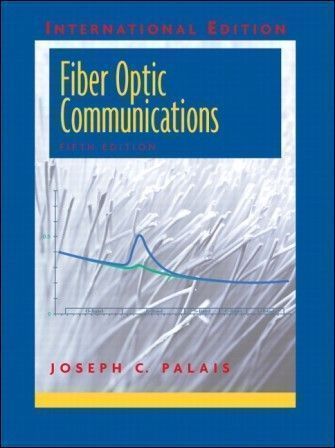書籍分類

Fiber Optic Communications 5/e
作者:Joseph C. Palais
原價:NT$ 1,100
ISBN:9780131293502
版次:5
年份:2005
出版商:Pearson Education
頁數/規格:441頁/平裝單色
版次:5
年份:2005
出版商:Pearson Education
頁數/規格:441頁/平裝單色
內容介紹 本書特色 目錄 作者介紹
- Description
This new and revised Fifth Edition of Fiber Optic Communications incorporates coverage of significant advances made in the fiber industry in recent years to present a comprehensive and in-depth introduction to the basics of communicating using optical fiber transmission lines. Students will learn system design as well as operating principles, characteristics, and application of the components that comprise fiber-optic systems.


